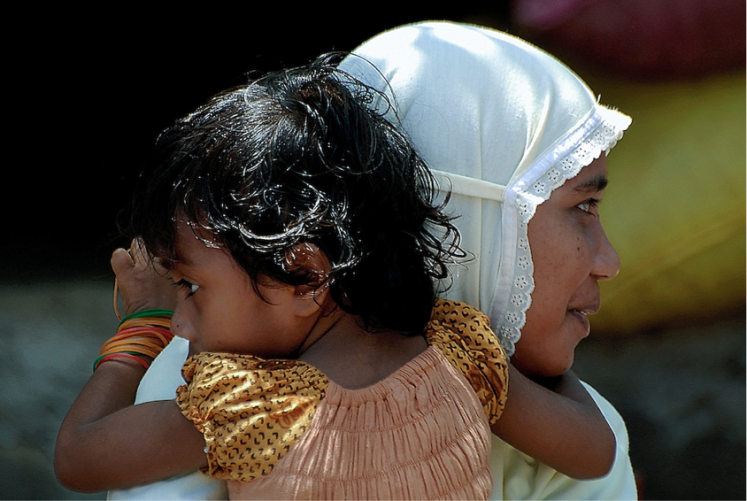
The double burden of malnutrition is a big problem in urban areas of Indonesia. As discussed in a previous post “Intervention Innovations in Indonesia” many cases occur in middle-income families in urban areas. Researchers recognize that easy access to food with a low-nutrient and high calorie content is widely available in these cities. However, it turns out that this is not just an issue in urban areas.
A study of rural Bangladesh and Indonesia yielded some interesting insights into the spread of double burden of malnutrition outside of urban centers.
According to the study, coexistence of overweight women and stunted children in a household (how they define double burden of malnutrition in this study) is persistent in rural areas of Indonesia1. This is a significant proportion of the country’s population, about 46%, and should not be ignored3.
Here are some of the risk factors associated with double burden of malnutrition in Indonesia1:
- Maternal short stature
- Low levels of maternal education
- Older age of the child
- Not breast-feeding the child
- Belonging to a wealthier quintile
- The child being female (families will often expend more effort to care for and feed male children)
These risk factors are very similar to risk factors in urban areas. Researchers feel this issue may be spreading to rural areas as well due to increased access to energy dense foods, as well as mechanization of agricultural practices leading to a more sedentary lifestyle for rural farmers1.
Unfortunately, double burden efforts have done little to focus on the issue in rural areas, what can be done?
Looking at research for malnutrition interventions in other areas may yield the desired results. A study of intervention methods in rural Iran showed some promising results.
In their study, they had a multi-faceted approach and addressed a wide range of issues. The following examples of actions taken in this study may be applicable to rural Indonesian populations2:
- educating mothers about: breastfeeding, complementary feeding, child feeding in diarrhea and other diseases, balancing and diversifying diet and food groups, preparing safe drinking water, creating a healthy home environment and family planning
- reinforcing the growth monitoring programme and sensitizing mothers to children’s growth cards
- strengthening literacy programmes for women
- increasing access to foods through establishment of rural cooperative stores
- promoting home gardening
While Indonesia has made strides in decreasing malnutrition in their cities, they cannot leave out their large rural population. The emphasis on maternal education remains the same as the study mentioned in “Intervention Innovations in Indonesia”, though the emphasis on gardening and cooperatives may be particularly impactful in rural areas. Additionally, an emphasis on proper sanitation measures, such as preparing clean water and appropriate waste disposal would be useful in both urban and rural settings.
The following video shows an intervention in a neighboring country facing similar issues, it focuses on the promotion of home gardening and children’s education as a means of helping to eradicate malnutrition.
Addressing Malnutrition through School Intervention
Written by: Devon Boullion
Sources:
1Oddo, V. M., Rah, J. H., Setnba, R. D., Kai, S., Akhter, N., Sari, M., & … Kraemer, K. (2012). Predictors of maternal and child double burden of malnutrition in rural Indonesia and Bangladesh. American Journal Of Clinical Nutrition, 95(4), 951-958. doi:10.3945/ajcn.111.026070
2Sheikholeslam, R., Kimiagar, M., Siasi, F., Abdollahi, Z., Jazayeri, A., Keyghobadi, K., & … Hormozdyari, H. (2004). Multidisciplinary intervention for reducing malnutrition among children in the Islamic Republic of Iran. Eastern Mediterranean Health Journal, 10(6), 844-852.
3http://data.worldbank.org/indicator/SP.RUR.TOTL.ZS


 Malnutrition can affect all areas of health and be detrimental to daily activities. The insidious nature of malnourishment is that eating either too much or too little causes this issue. How can you make sure you’re eating properly?
Malnutrition can affect all areas of health and be detrimental to daily activities. The insidious nature of malnourishment is that eating either too much or too little causes this issue. How can you make sure you’re eating properly?



